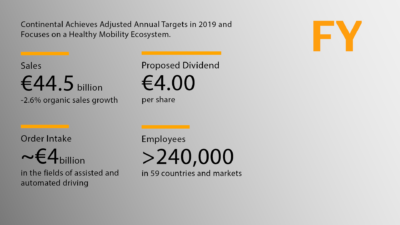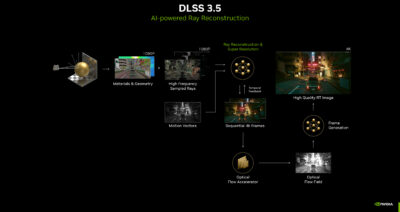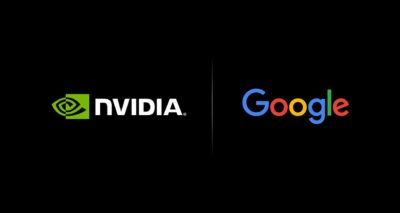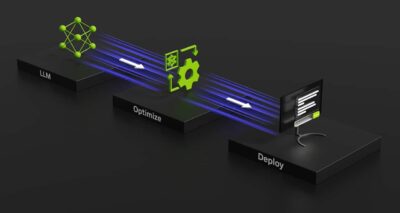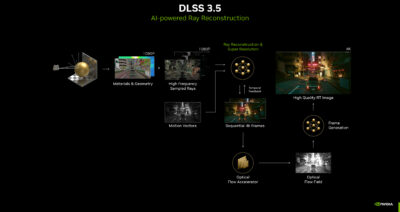Entrepreneurs and VCs share their secrets for striking it rich.
by RICK MERRITT

Now that data is the new oil, AI software startups are sprouting across the tech terrain like pumpjacks in Texas. A whopping $80 billion in venture capital is fueling as many as 12,000 new companies.
Only a few will tap a gusher. Those who do, experts say, will practice six key success factors.
1. Master your domain
2. Gather big data fast
3. See (a little) ahead of the market
4. Make a better screwdriver
5. Scale across the clouds
6. Stay flexible
Some of the biggest wins will come from startups with AI apps that “turn an existing provider on its head by figuring out a new approach for call centers, healthcare or whatever it is,” said Rajeev Madhavan who manages a $300 million fund at Clear Ventures, nurturing nine AI startups.
1. Master Your Domain
Madhavan sold his electronic design automation startup Magma Design in 2012 to Synopsys for $523 million. His first stop on the way to becoming a VC was to take Andrew Ng’s Stanford course in AI.
“For a brief period in Silicon Valley every startup’s pitch would just throw in jargon on AI, but most of them were just doing collaborative filtering,” he said. “The app companies we look for have to be heavy on AI, but success comes down to how good a startup is in its domain space,” he added.
Chris Rowen agrees. The veteran entrepreneur who in 2013 sold his startup Tensilica to Cadence Design for $380 million considers domain expertise the top criteria for an AI software startup’s success.
Rowen’s latest startup, BabbleLabs, uses AI to filter noise from speech in real time. “At the root of it, I’m doing something analogous to what I’ve done in much of my career — work on really hard real-time computing problems that apply to mass markets,” Rowen said.
Overall, “deep learning is still at the stage where people are having challenges understanding which problems can be handled with this technique. The companies that recognize a vertical-market need and deliver a solution for it have a bigger chance of getting early traction. Over time, there will be more broad, horizontal opportunities,” he added.
Jeff Herbst nurtures more than 5,000 AI startups under the NVIDIA Inception program that fuels entrepreneurs with access to its technology and market connections. But the AI tag is just shorthand.
In a way, it’s like a rerun of The Invasion of the DotComs. “We call them AI companies today, but they are all in specialized markets — in the not-so-distant future, every company will be an AI company,” said Herbst, vice president of business development at NVIDIA.
Today’s AI software landscape looks like a barbell to Herbst. Lots of activity by a handful of cloud-computing giants at one end and a bazillion startups at the other.
2. Get Big Data Fast
Collecting enough bits to fill a data lake is perhaps the hardest challenge for an AI startup.
Among NVIDIA’s Inception startups, Zebra Medical Vision uses AI on medical images to make faster, smarter diagnoses. To get the data it needed, it partnered both with Israel’s largest healthcare provider as well as Intermountain Healthcare, which manages 215 clinics and 24 hospitals in the U.S.
“We understood data was the most important asset we needed to secure, so we invested a lot in the first two years of the startup not only in data but also in developing all kinds of algorithms in parallel,” said Eyal Toledano, co-founder and CTO of Zebra. “To find one good clinical solution, you have to go through many candidates.”
Getting access to 20 years of digital data from top drawer healthcare organizations “took a lot of convincing” both from Zebra’s chief executive and Toledano.
“My contribution was showing how security, compliance and anonymity could be done. There was a lot of education and co-development so they would release the data and we could do research that could contribute back to their patient population in return,” he added.
It’s working. To date Zebra has raised $50 million, received FDA approvals on four products with one more pending “and a few other submissions are on the way,” he said.
Toledano also gave kudos to NVIDIA’s Inception program.
“We had many opportunities to examine new technologies before they became widely used. We saw the difference in applying new GPUs to current processes, and looked at inference in the hospital with GPUs to improve the user experience, especially in time-critical applications,” he said.
“We also got some good know-how and ideas to improve our own infrastructure with training and infrastructure libraries to build projects. We tried quite a lot of the NVIDIA technologies and some were really amazing and fruitful, and we adopted a DGX server and decreased our development and training time substantially in many evaluations,” he added.

Another Inception startup, Scale, which provides training and validation data for self-driving cars and other platforms, got on board with Toyota and Lyft. “Working with more people makes your algorithms smarter, and then more people want to work with you — you get into a cycle of success,” said Herbst.
Reflektion, one of Madhavan’s startups, now has a database of 200 million unique shoppers, the third largest retail database after Amazon and Walmart. It started with zero. Getting big took three years and a few great partners.
Rowen’s BabbleLabs applied a little creativity and elbow grease to get a lot of data cheaply and fast. It siphoned speech data from free sources as diverse as YouTube and the Library of Congress. When it needed specialized data, it activated a network of global contractors “quite economically,” he said.
“You can find low-cost, low-quality data sources, then use algorithms to filter and curate the data. Controlling the amount of noise associated with the speech helped simplify training.” he added.
“In AI, access to data no one else has is the big win,” said Herbst. “The world has a lot of open source frameworks and tools, but a lot of the differentiation comes from proprietary access to the data that does the programming,” he added.
When seeking data-rich customers and partners “the fastest way to get in the door is knowing what their pain points are,” said Alen Capalik, founder of FASTDATA.io.
Work in high-frequency trading on Wall Street taught Capalik the value of GPUs. When he came up with an idea for using them to ingest real-time data fast for any application, he sought out Herbst at NVIDIA in 2017.
“He almost immediately wrote me a check for $1.5 million,” Capalik said.
3. See (a Little) Ahead of the Market
Today, FASTDATA.io is poised for a Series A financing round to fuel its recently released PlasmaENGINE, which already has two customers and over 20 more in the pipeline. “I think we are 12-18 months ahead of the market, which is a great spot to be in,” said Capalik, whose product can process as much data as 100 Spark instances.
That wasn’t the position Capalik found himself in his last time out. His cybersecurity startup — GoSecure, formerly CounterTack — pioneered the idea of end-point threat detection as much as six years before it caught on.
“People told me I was crazy. Palo Alto Networks and FireEye were doing perimeter security, and users thought they’d never install agents again because they slowed systems down. So, we struggled for a while and had to educate the market a lot,” he said.
Education and awareness are the kinds of jobs established corporations tackle. For startups, being visionary is like Steve Jobs unveiling an iPhone — “show them what they didn’t know they wanted,” he said.
“Netflix went after video streaming before there was enough bandwidth or end points — they skated to where the puck was going,” said Herbst.
4. Make a Better Screwdriver
AI holds opportunities for arms dealers, too — the kind who sell the software tools data scientists use to tighten down the screws on their neural networks.
The current Swiss Army knife of AI is the workbench. It’s a software platform for developing and deploying machine-learning models in today’s DevOps IT environment.
Jupyter notebooks could be seen as a sort of two-blade model you get for free as open source. Giants such as AWS, IBM and Microsoft and dozens of startups such as H20.ai and Dataiku are rolling out versions with more forks, corkscrews and toothpicks.
Despite all the players and a fast-moving market, there are still opportunities here, said James Kobielus, a lead analyst for AI and data science at Wikibon. Start as a plug-in for a popular workbench, he suggested.
Startups can write modules to support emerging frameworks and languages, or a mod to help a workbench tap into the AI goodness embedded in the latest smartphones. Alternatively, you can automate streaming operations or render logic automatically into code, the former IBM data-science evangelist advised.
If workbenches aren’t for you, try robotic process automation, another emerging category trying to make AI easier for more people to use. “You can clean up if you can democratize RPA for makers and kids — that’s exciting,” Kobielus said.
There’s a wide-open opportunity for tools that cram neural nets into the kilobytes of memory on devices such as smart speakers, appliances and even thermostats, BabbleLabs’ Rowen said. His company aims to run its speech models on some of the world’s smallest microcontrollers.
“We need compilers that take trained models and do quantization, model compression and optimized model generation to fit into the skinny memory of embedded systems — nothing solves this problem yet,” he said.
5. Expand Across the Clouds
The playing field is very competitive with more startups than ever because it’s easier than ever to start a company, said Herbst, who worked closely with entrepreneurs even before he joined NVIDIA 18 years ago.
All you need to get started today is an idea, a laptop, a cup of coffee and a cloud-computing account. “All the infrastructure is a service now,” he said.
But if you get lucky and scale, that one cloud-computing account can become a bottleneck and your biggest cost after payroll.
“That’s a good problem to have, but to hit breakeven and make it easier for customers, you need your software running on any cloud,” said Madhavan.
The need is so striking, he wound up funding a startup to address it. Robin.io is an expert in stateful and stateless workloads, helping companies become cloud-agnostic. “We have been extremely successful with 5G telcos going cloud native and embracing containers,” he said.
6. Stay Flexible as a Yogi
Few startups wind up where they thought they were going. Apple planned to make desktop computers, Amazon aimed to sell books online.
Over time “they pivot one way or another. They go in with a problem to solve, but as they talk to customers the smart ones learn from those interactions how to re-target or tailor themselves,” said Herbst, who gives an example from his pre-AI days
Keyhole Corp. wanted to provide 3D mapping services initially for real estate agents and other professionals. Its first product was distributed on CDs.
As a veteran of early search startup AltaVista, “I thought this startup belonged more to a Yahoo! or some other internet company. I realized it was not a professional but a major consumer app,” said Herbst, who was happy to fund them as one of NVIDIA’s first investments outside gaming.
In time, Google agreed with Herbst and acquired the company. Keyhole’s technology became part of the underpinnings of Google Maps and Google Earth.
“They had a nice exit, their people went on to have rock-star careers at Google, and I believe were among the original creators of Pokemon Go,” he said.
The lesson is simple: Follow good directions — like the six success factors for AI software startups — and there’s no telling where you may end up.
Entrepreneurs and VCs share their secrets for striking it rich.
by RICK MERRITT

Now that data is the new oil, AI software startups are sprouting across the tech terrain like pumpjacks in Texas. A whopping $80 billion in venture capital is fueling as many as 12,000 new companies.
Only a few will tap a gusher. Those who do, experts say, will practice six key success factors.
1. Master your domain
2. Gather big data fast
3. See (a little) ahead of the market
4. Make a better screwdriver
5. Scale across the clouds
6. Stay flexible
Some of the biggest wins will come from startups with AI apps that “turn an existing provider on its head by figuring out a new approach for call centers, healthcare or whatever it is,” said Rajeev Madhavan who manages a $300 million fund at Clear Ventures, nurturing nine AI startups.
1. Master Your Domain
Madhavan sold his electronic design automation startup Magma Design in 2012 to Synopsys for $523 million. His first stop on the way to becoming a VC was to take Andrew Ng’s Stanford course in AI.
“For a brief period in Silicon Valley every startup’s pitch would just throw in jargon on AI, but most of them were just doing collaborative filtering,” he said. “The app companies we look for have to be heavy on AI, but success comes down to how good a startup is in its domain space,” he added.
Chris Rowen agrees. The veteran entrepreneur who in 2013 sold his startup Tensilica to Cadence Design for $380 million considers domain expertise the top criteria for an AI software startup’s success.
Rowen’s latest startup, BabbleLabs, uses AI to filter noise from speech in real time. “At the root of it, I’m doing something analogous to what I’ve done in much of my career — work on really hard real-time computing problems that apply to mass markets,” Rowen said.
Overall, “deep learning is still at the stage where people are having challenges understanding which problems can be handled with this technique. The companies that recognize a vertical-market need and deliver a solution for it have a bigger chance of getting early traction. Over time, there will be more broad, horizontal opportunities,” he added.
Jeff Herbst nurtures more than 5,000 AI startups under the NVIDIA Inception program that fuels entrepreneurs with access to its technology and market connections. But the AI tag is just shorthand.
In a way, it’s like a rerun of The Invasion of the DotComs. “We call them AI companies today, but they are all in specialized markets — in the not-so-distant future, every company will be an AI company,” said Herbst, vice president of business development at NVIDIA.
Today’s AI software landscape looks like a barbell to Herbst. Lots of activity by a handful of cloud-computing giants at one end and a bazillion startups at the other.
2. Get Big Data Fast
Collecting enough bits to fill a data lake is perhaps the hardest challenge for an AI startup.
Among NVIDIA’s Inception startups, Zebra Medical Vision uses AI on medical images to make faster, smarter diagnoses. To get the data it needed, it partnered both with Israel’s largest healthcare provider as well as Intermountain Healthcare, which manages 215 clinics and 24 hospitals in the U.S.
“We understood data was the most important asset we needed to secure, so we invested a lot in the first two years of the startup not only in data but also in developing all kinds of algorithms in parallel,” said Eyal Toledano, co-founder and CTO of Zebra. “To find one good clinical solution, you have to go through many candidates.”
Getting access to 20 years of digital data from top drawer healthcare organizations “took a lot of convincing” both from Zebra’s chief executive and Toledano.
“My contribution was showing how security, compliance and anonymity could be done. There was a lot of education and co-development so they would release the data and we could do research that could contribute back to their patient population in return,” he added.
It’s working. To date Zebra has raised $50 million, received FDA approvals on four products with one more pending “and a few other submissions are on the way,” he said.
Toledano also gave kudos to NVIDIA’s Inception program.
“We had many opportunities to examine new technologies before they became widely used. We saw the difference in applying new GPUs to current processes, and looked at inference in the hospital with GPUs to improve the user experience, especially in time-critical applications,” he said.
“We also got some good know-how and ideas to improve our own infrastructure with training and infrastructure libraries to build projects. We tried quite a lot of the NVIDIA technologies and some were really amazing and fruitful, and we adopted a DGX server and decreased our development and training time substantially in many evaluations,” he added.

Another Inception startup, Scale, which provides training and validation data for self-driving cars and other platforms, got on board with Toyota and Lyft. “Working with more people makes your algorithms smarter, and then more people want to work with you — you get into a cycle of success,” said Herbst.
Reflektion, one of Madhavan’s startups, now has a database of 200 million unique shoppers, the third largest retail database after Amazon and Walmart. It started with zero. Getting big took three years and a few great partners.
Rowen’s BabbleLabs applied a little creativity and elbow grease to get a lot of data cheaply and fast. It siphoned speech data from free sources as diverse as YouTube and the Library of Congress. When it needed specialized data, it activated a network of global contractors “quite economically,” he said.
“You can find low-cost, low-quality data sources, then use algorithms to filter and curate the data. Controlling the amount of noise associated with the speech helped simplify training.” he added.
“In AI, access to data no one else has is the big win,” said Herbst. “The world has a lot of open source frameworks and tools, but a lot of the differentiation comes from proprietary access to the data that does the programming,” he added.
When seeking data-rich customers and partners “the fastest way to get in the door is knowing what their pain points are,” said Alen Capalik, founder of FASTDATA.io.
Work in high-frequency trading on Wall Street taught Capalik the value of GPUs. When he came up with an idea for using them to ingest real-time data fast for any application, he sought out Herbst at NVIDIA in 2017.
“He almost immediately wrote me a check for $1.5 million,” Capalik said.
3. See (a Little) Ahead of the Market
Today, FASTDATA.io is poised for a Series A financing round to fuel its recently released PlasmaENGINE, which already has two customers and over 20 more in the pipeline. “I think we are 12-18 months ahead of the market, which is a great spot to be in,” said Capalik, whose product can process as much data as 100 Spark instances.
That wasn’t the position Capalik found himself in his last time out. His cybersecurity startup — GoSecure, formerly CounterTack — pioneered the idea of end-point threat detection as much as six years before it caught on.
“People told me I was crazy. Palo Alto Networks and FireEye were doing perimeter security, and users thought they’d never install agents again because they slowed systems down. So, we struggled for a while and had to educate the market a lot,” he said.
Education and awareness are the kinds of jobs established corporations tackle. For startups, being visionary is like Steve Jobs unveiling an iPhone — “show them what they didn’t know they wanted,” he said.
“Netflix went after video streaming before there was enough bandwidth or end points — they skated to where the puck was going,” said Herbst.
4. Make a Better Screwdriver
AI holds opportunities for arms dealers, too — the kind who sell the software tools data scientists use to tighten down the screws on their neural networks.
The current Swiss Army knife of AI is the workbench. It’s a software platform for developing and deploying machine-learning models in today’s DevOps IT environment.
Jupyter notebooks could be seen as a sort of two-blade model you get for free as open source. Giants such as AWS, IBM and Microsoft and dozens of startups such as H20.ai and Dataiku are rolling out versions with more forks, corkscrews and toothpicks.
Despite all the players and a fast-moving market, there are still opportunities here, said James Kobielus, a lead analyst for AI and data science at Wikibon. Start as a plug-in for a popular workbench, he suggested.
Startups can write modules to support emerging frameworks and languages, or a mod to help a workbench tap into the AI goodness embedded in the latest smartphones. Alternatively, you can automate streaming operations or render logic automatically into code, the former IBM data-science evangelist advised.
If workbenches aren’t for you, try robotic process automation, another emerging category trying to make AI easier for more people to use. “You can clean up if you can democratize RPA for makers and kids — that’s exciting,” Kobielus said.
There’s a wide-open opportunity for tools that cram neural nets into the kilobytes of memory on devices such as smart speakers, appliances and even thermostats, BabbleLabs’ Rowen said. His company aims to run its speech models on some of the world’s smallest microcontrollers.
“We need compilers that take trained models and do quantization, model compression and optimized model generation to fit into the skinny memory of embedded systems — nothing solves this problem yet,” he said.
5. Expand Across the Clouds
The playing field is very competitive with more startups than ever because it’s easier than ever to start a company, said Herbst, who worked closely with entrepreneurs even before he joined NVIDIA 18 years ago.
All you need to get started today is an idea, a laptop, a cup of coffee and a cloud-computing account. “All the infrastructure is a service now,” he said.
But if you get lucky and scale, that one cloud-computing account can become a bottleneck and your biggest cost after payroll.
“That’s a good problem to have, but to hit breakeven and make it easier for customers, you need your software running on any cloud,” said Madhavan.
The need is so striking, he wound up funding a startup to address it. Robin.io is an expert in stateful and stateless workloads, helping companies become cloud-agnostic. “We have been extremely successful with 5G telcos going cloud native and embracing containers,” he said.
6. Stay Flexible as a Yogi
Few startups wind up where they thought they were going. Apple planned to make desktop computers, Amazon aimed to sell books online.
Over time “they pivot one way or another. They go in with a problem to solve, but as they talk to customers the smart ones learn from those interactions how to re-target or tailor themselves,” said Herbst, who gives an example from his pre-AI days
Keyhole Corp. wanted to provide 3D mapping services initially for real estate agents and other professionals. Its first product was distributed on CDs.
As a veteran of early search startup AltaVista, “I thought this startup belonged more to a Yahoo! or some other internet company. I realized it was not a professional but a major consumer app,” said Herbst, who was happy to fund them as one of NVIDIA’s first investments outside gaming.
In time, Google agreed with Herbst and acquired the company. Keyhole’s technology became part of the underpinnings of Google Maps and Google Earth.
“They had a nice exit, their people went on to have rock-star careers at Google, and I believe were among the original creators of Pokemon Go,” he said.
The lesson is simple: Follow good directions — like the six success factors for AI software startups — and there’s no telling where you may end up.










